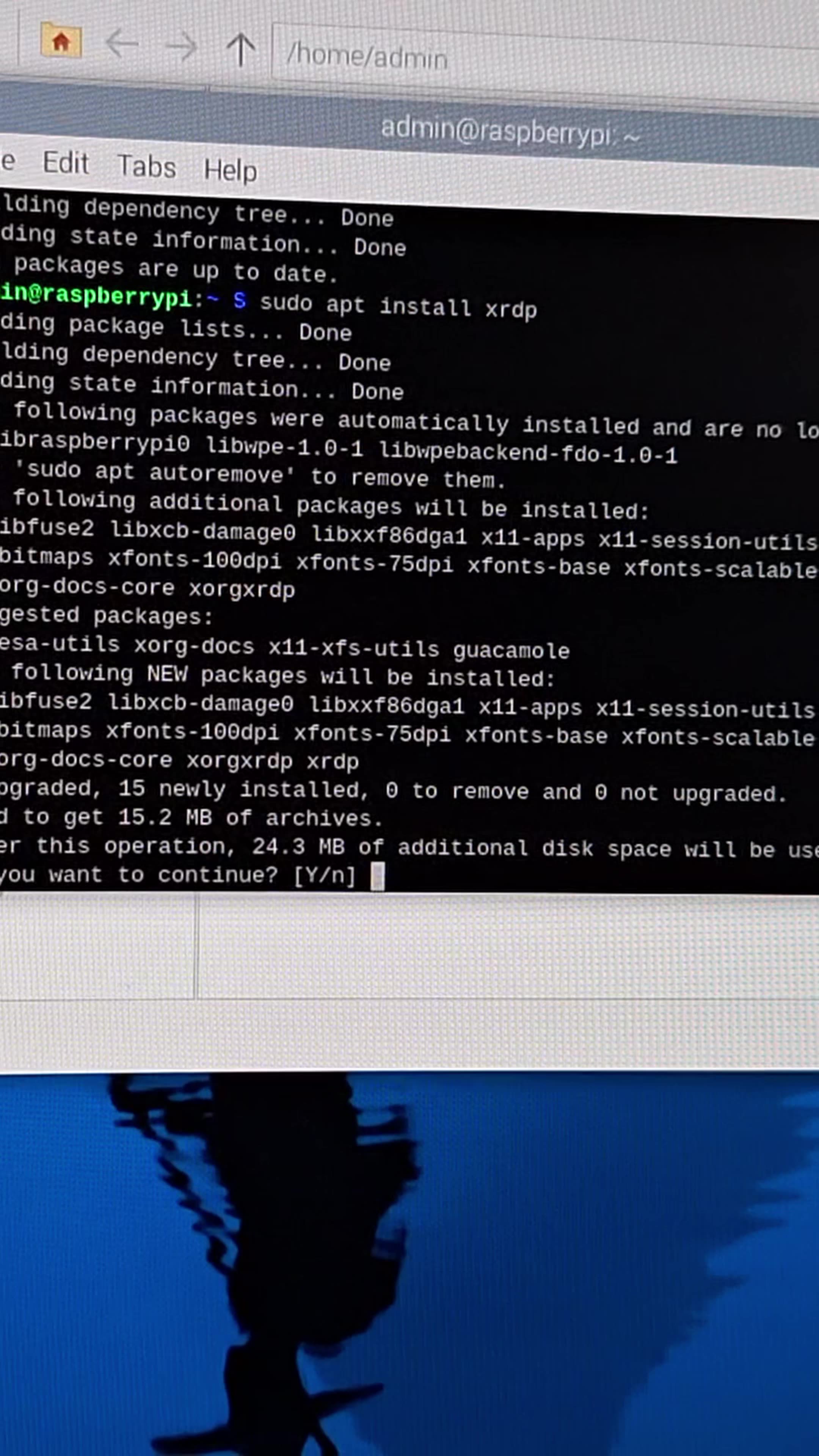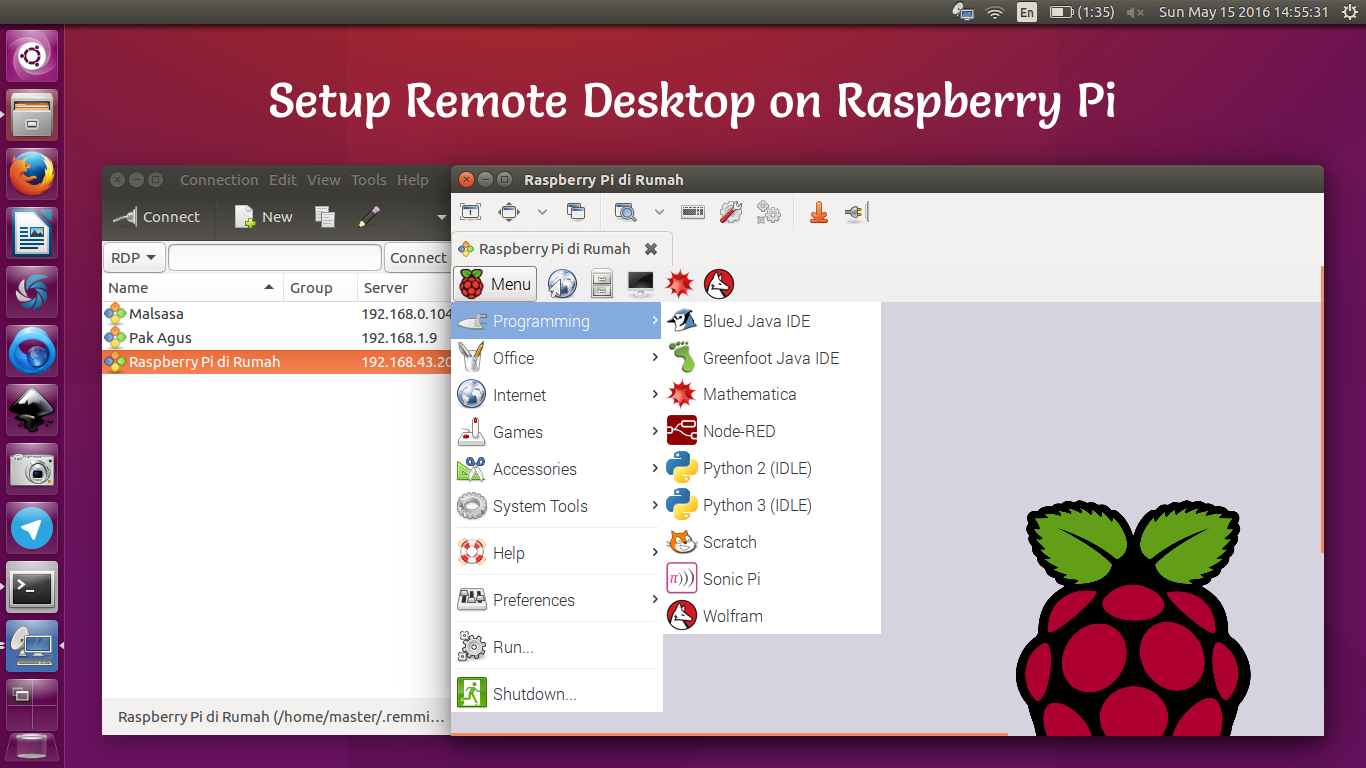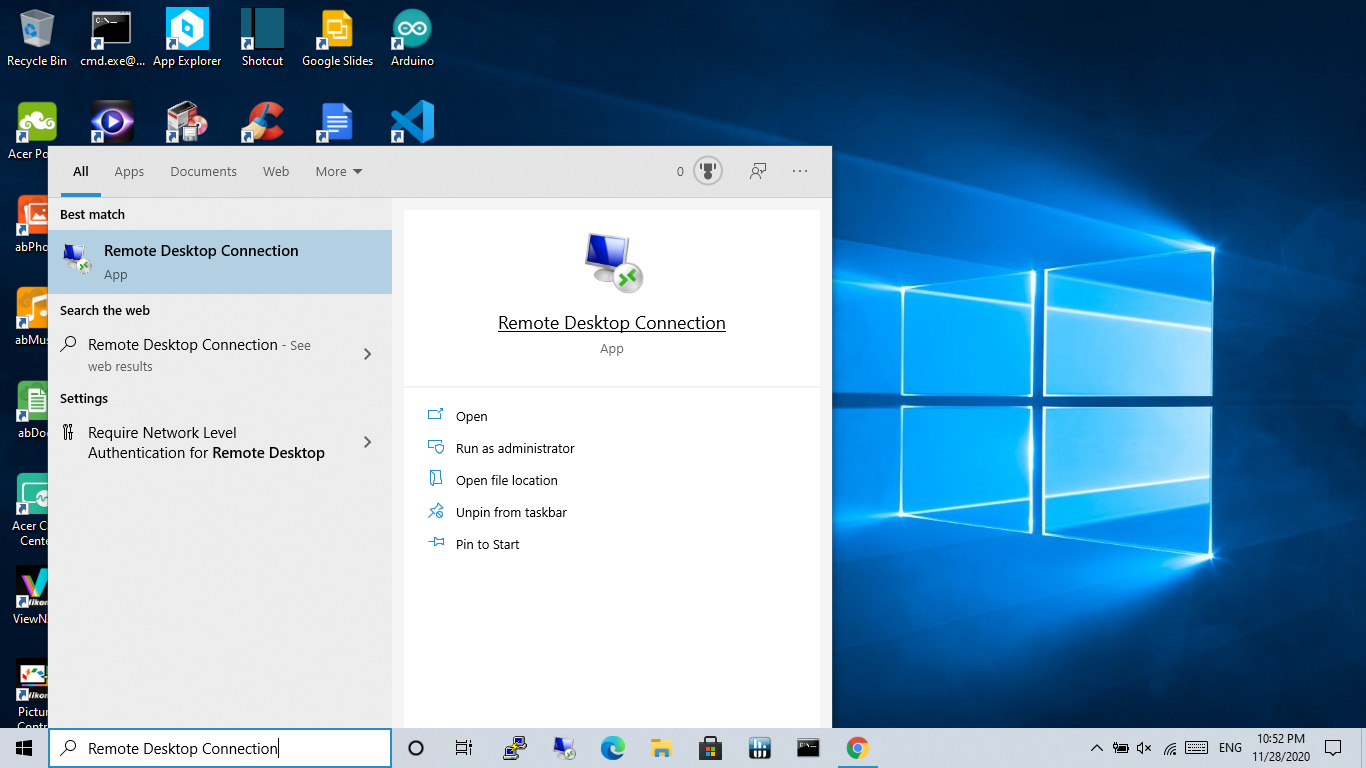Enable Remote Access Raspberry Pi - Your Guide To Control
Ever wish you could tinker with your Raspberry Pi, check on a project, or just see what it's up to, even when you're not right there with it? It's a pretty common wish, and the good news is that reaching your little computer from a distance is very much a possibility. Think about it: you could be at work, on vacation, or just in another room, and still have full command over your Pi. This ability to connect and manage your device remotely truly opens up a whole new world of projects and convenience, making your small computer a much more versatile tool for all sorts of uses, actually.
Getting your Raspberry Pi ready for remote connections means setting up a few things, but it's not as tricky as you might think. We're going to walk through the different ways you can make this happen, from simple text-based controls to seeing your Pi's desktop on your screen, no matter where you are. The idea is to give you the freedom to interact with your Pi whenever you need to, which is pretty cool, and you know, it just makes things a lot easier for you.
So, if you've got a Raspberry Pi sitting somewhere, perhaps running a home server, a security camera, or some smart home gadget, and you'd love to check in on it without having to physically plug in a keyboard and screen, then you're in the right spot. We'll talk about the tools and steps needed to get you connected, making sure your Pi is always within your reach, sort of, even when you're far away.
- Unveiling G Eazys Romantic Life Who Is His Girlfriend In 2024
- Unveiling The Talent Behind Alex Dunphy In Modern Family
- Unveiling Ray Benzinos Net Worth A Journey Through His Life And Career
- Discovering The Life Of Jason Kelces Wife A Peek Into Their Journey Together
- Unveiling The Life Of Angel Iris Murphy Brown
Table of Contents
- Why Would You Want to Reach Your Raspberry Pi From Afar?
- Common Ways to Get to Your Pi Without Being There
- What Do You Need Before You Start to Enable Remote Access Raspberry Pi?
- How Do You Set Up SSH to Enable Remote Access Raspberry Pi?
- Setting Up VNC to Enable Remote Access Raspberry Pi
- Making Your Pi Reachable From Outside Your Home Network
- Keeping Your Remote Access Safe
- Fixing Common Connection Issues
Why Would You Want to Reach Your Raspberry Pi From Afar?
You might be wondering why someone would even bother to enable remote access Raspberry Pi. Well, think about all the cool things these small computers can do. People use them for all sorts of projects: setting up a little home media center, running a private server for their files, making a smart mirror, or even controlling lights and other devices in their house. If your Pi is tucked away in a corner, maybe in a server rack, or even in a different building, it’s not always handy to go over and plug in a screen and keyboard every time you need to make a small change or check on something. That, you know, can be a real hassle.
Being able to get to your Pi from another computer, perhaps your laptop or even your phone, means you have freedom. You could be on the couch and check if your home automation script is still running, or if your little weather station is collecting data. It also means you can help a friend or family member with their Pi project without having to be in the same room, which is pretty convenient. In a way, it makes your Pi a much more powerful and flexible tool, ready for whatever you need it to do, wherever you happen to be.
What Does It Mean to Enable Remote Access Raspberry Pi?
When we talk about making it possible to get to your Raspberry Pi from somewhere else, we're basically talking about setting up a way for one computer to talk to another over a network. This could be your home network, or it could be the bigger internet. It means that instead of sitting directly in front of your Pi with a monitor and keyboard, you're sending commands and getting information back through wires or wirelessly, just like your computer talks to a website. It’s like having a very long, invisible cable that lets you reach out and touch your Pi, so to speak, even when it's not right next to you, which is very useful.
- The Enigmatic Charm Of The Lady Gremlin
- Transforming The Body Chris Pratts Weight Loss Journey
- Unveiling The Magic Of Ronaldinho The Soccer Maestro
- Unveiling The Life And Career Of Traylor Howard
- Discovering The World Of Yesmovies Your Ultimate Guide To Streaming
This ability to connect from a distance is built on certain software tools and network settings. We're going to look at the popular ways people set this up, each with its own good points depending on what you want to do. Some ways are good for typing commands, while others let you see the Pi's full graphical desktop, just as if you were sitting in front of it. So, you know, it's all about picking the right tool for the job you have in mind.
Common Ways to Get to Your Pi Without Being There
There are a few main paths people take when they want to enable remote access Raspberry Pi. Each path has its own strengths and is good for different kinds of tasks. It's a bit like choosing between a bike, a car, or a plane to get somewhere; they all get you there, but they offer different experiences and speeds. We'll go over the most common ones here, so you can get a feel for what might work best for your situation, basically.
SSH-ing to Enable Remote Access Raspberry Pi
One of the most common and perhaps the simplest ways to get to your Raspberry Pi without being right there is using something called SSH. This stands for Secure Shell. Think of it as a secure way to open up a text-based window on your computer that connects directly to your Pi. You can type commands into this window, and your Pi will carry them out, just as if you were typing them directly on the Pi itself. It's really good for managing files, running scripts, installing programs, and doing pretty much anything that doesn't need a graphical picture on the screen. It’s a very popular choice for many, you know, for good reason.
The nice thing about SSH is that it's very light on resources. It doesn't need a lot of network speed, and it doesn't make your Pi work too hard. It also offers a good level of safety, keeping your connection private. This makes it a go-to choice for many people who just need to get things done on their Pi without seeing a full desktop. So, it's often the first thing people set up when they want to enable remote access Raspberry Pi, actually.
VNC for Visual Control to Enable Remote Access Raspberry Pi
If you're someone who likes to see what's happening, or if your Pi project needs you to click on icons and move windows around, then VNC is probably what you're looking for. VNC stands for Virtual Network Computing. It lets you see your Raspberry Pi's full desktop environment on your computer screen, no matter where you are. It's like having your Pi's monitor magically appear on your laptop or tablet. You can use your mouse and keyboard to control it just as if you were sitting right in front of it. This is really handy for tasks that are more visual, perhaps when you're working with a graphical program or setting up something that has a lot of visual elements, and you know, it makes things feel much more familiar.
Setting up VNC involves putting a special program on your Pi that shares its screen, and then using another program on your other computer to view that shared screen. It does use a bit more network speed than SSH because it's sending all those picture updates, but for many, the ability to have that full desktop experience is worth it. So, if you want to enable remote access Raspberry Pi and want to see the pretty pictures, VNC is a great way to go, honestly.
Web-Based Interfaces to Enable Remote Access Raspberry Pi
Sometimes, for specific projects, people use web-based interfaces to control their Pi. This means your Raspberry Pi runs a small web server, and you can simply open a web browser on any device – your phone, tablet, or another computer – and go to a specific address to interact with your Pi. This is very common for things like home automation systems (like Home Assistant or OpenHAB), media servers (like Plex), or even just simple dashboards to check the Pi's status. The control is usually limited to what the web interface is designed for, but it's incredibly easy to use once it's set up. It’s a bit like using an app on your phone to control a smart device, which is pretty straightforward, you know.
These interfaces are often made to be user-friendly, with buttons and menus that are simple to understand. You don't need to know any special commands, just how to click around a website. While they might not give you full control over every little thing on your Pi, they offer a very convenient way to manage specific functions. So, for certain uses, this is a very good way to enable remote access Raspberry Pi, especially if you want something simple and clear, basically.
What Do You Need Before You Start to Enable Remote Access Raspberry Pi?
Before you jump into setting up remote access, there are a few things you should have in place or at least think about. Getting these ready beforehand can save you a lot of headaches later on. It’s like getting your tools ready before you start building something; it just makes the whole process smoother and less frustrating. So, you know, a little preparation goes a long way here.
Network Considerations for Enable Remote Access Raspberry Pi
First off, your Raspberry Pi needs to be connected to a network. This usually means connecting it to your home Wi-Fi or plugging it into your router with an Ethernet cable. For remote access to work, your Pi needs to have an IP address on that network. It’s like a phone number for your Pi on the network, letting other devices find it. You'll want to know what this IP address is, as you'll use it to connect from your other computer. You can usually find this out by typing a simple command on your Pi itself, like hostname -I, which is pretty easy to remember, actually.
If you plan to reach your Pi from outside your home network – say, from a coffee shop or a friend's house – things get a bit more involved. Your home router usually acts like a shield, protecting your devices from the outside internet. To let your Pi be seen from outside, you'll need to make some changes to your router settings, often called "port forwarding." We'll talk a bit more about that later, but it's a key thing to think about if you want true remote access from anywhere. It's a slightly more advanced step, but very doable, you know.
Security Thoughts for Enable Remote Access Raspberry Pi
This is a very important part of making your Pi reachable from afar. When you open up your Pi to connections, especially from the wider internet, you're also opening it up to potential unwanted visitors. Think of it like putting a new door on your house; you want to make sure it has a good, strong lock. The last thing you want is for someone else to get into your Pi and mess with your projects or, even worse, use it for something bad. So, being careful about safety is a big deal when you enable remote access Raspberry Pi. It's not something to skip over, to be honest.
We'll talk about specific safety steps later, but for now, just keep in mind that using strong, hard-to-guess passwords is a must. Also, making sure your Pi's software is up to date helps a lot, as updates often fix holes that bad guys could use to get in. It's all about making it as difficult as possible for anyone who shouldn't be there to get access. This little bit of care really makes a difference, you know, for keeping your things safe.
How Do You Set Up SSH to Enable Remote Access Raspberry Pi?
Setting up SSH is often the first step for many people who want to control their Raspberry Pi from a distance. It's straightforward and gives you a powerful way to interact with your Pi using just text commands. This method is usually built right into the Raspberry Pi operating system, so you don't have to put in a lot of extra programs. It’s pretty much ready to go with a few simple tweaks, which is very handy, you know.
Turning On SSH on Your Pi
If you're using a newer version of Raspberry Pi OS, SSH might not be turned on by default. This is a safety measure. To turn it on, you have a few ways. One common way is to go into the Raspberry Pi Configuration tool. You can find this in the main menu under 'Preferences'. Once you open it up, go to the 'Interfaces' tab. There, you'll see an option for SSH. Just make sure the little circle next to it is filled in, or checked, to turn it on. Then, click 'OK'. That's pretty much it for the Pi's side of things, actually.
Another way, if you're setting up a new Pi without a screen, is to put an empty file named ssh (no file extension) into the root directory of your SD card. When the Pi starts up with that SD card, it will see that file and automatically turn on SSH. This is super handy for what they call "headless" setups, where you don't have a monitor attached to your Pi from the start. So, in a way, you can get SSH going before you even plug in your Pi for the first time, which is very clever.
Connecting From Another Computer
Once SSH is on your Pi, you can connect to it from another computer. If you're using a computer with Linux or macOS, you can just open up your 'Terminal' program. If you're on a Windows computer, you'll need a program like PuTTY, or you can use the built-in 'Command Prompt' or 'PowerShell' if your Windows version is newer. The command you'll use is pretty simple: ssh pi@your_pi_ip_address. Replace 'your_pi_ip_address' with the actual IP address of your Raspberry Pi on your home network. The 'pi' part is the default username for Raspberry Pi OS. You'll then be asked for the password, which is usually 'raspberry' by default. You should definitely change that default password right away for safety, by the way.
- Unveiling The Mystery Of Hailee Steinfelds Boyfriend
- Unraveling The Life Of Mark Davis Wife A Journey Of Love And Legacy
- Unveiling The Life Of Whoopi Goldberg And Ted Dansons Daughter
- Exploring The Life Of Leanne Morgan And Her Husband Clayton Homes
- Unveiling The Mystery Of Drake Milligans Partner

Remote Access Pi #raspberrypi #raspberrypi4 #raspberrypi5

How to Setup Raspberry Pi Remote Desktop (5 Methods)

Hello Raspberry Pi: Remote access Raspberry Pi using xrdp/Microsoft